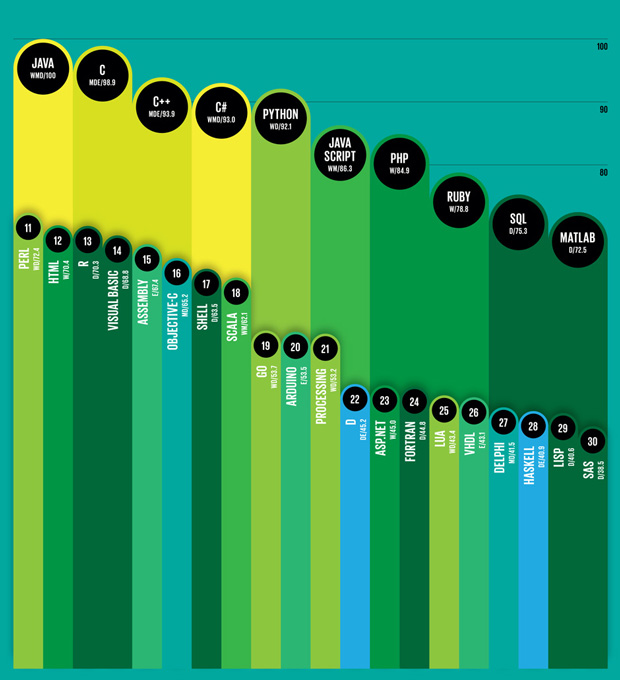

If you’re old enough, think back to software titles of the 1980s. But one person could understand and be an expert in everything necessary to create that software. Those early days of programming were hard, that’s for sure. So, Is There Room for Visual Programming Languages Today?
#Visual programming language list code
Similarly, visual programming software tends to be limited by the creator’s imagination in a way that doesn’t hamper general-purpose textual programming languages.Īnd yet tools like Visual Basic, Delphi, and their descendants have shown us that building software visually can be enormously efficient it’s just that there’s a pragmatic trade-off where, sometimes, hand-written code is the right solution. When your “code” looks like a CPU circuit diagram, it’s perhaps time to rethink the suitability of visual programming to the task. For general purpose software, though, the world is just too complex to model purely visually. Without a doubt, visual programming has its role, whether that’s programming synthesizers or giving UML enthusiasts a sense of accomplishment. Then, they'll tell you that tool is proof that it's alive and kicking.Ī quick search on Google will show you not just the tool they’ve mentioned but also the highly specialized world in which it exists. Ask them, "what is visual programming?" and first, they'll name an obscure domain-specific tool. The State of Visual Programming Todayīased on what history shows us, is visual programming dead? Visual programming enthusiasts will tell you that it’s far from dead. Rational Rose is a suite of tools for creating software using UML and generating executable code in a target language, such as C++ or Java.Ĭase view in Rational Rose. Interestingly, one form of executable UML that did stick around also came out of Rational Software. Several implementations surfaced but without making too much of an impact on a world that was rapidly switching its focus to PHP, Ruby on Rails, and other dynamic scripting languages. Executable UML was an attempt to add that missing piece-the executable software. Just as agile was gaining momentum, UML seemed to enable all the worst aspects of the old ways of building software: too much planning and too little implementation. The co-author of The Pragmatic Programmer, Andy Hunt, tells the story of a software project where an architect spent two years creating UML diagrams before even a line of code was written. However, UML-fever struck some architects. UML provided a standardized and comprehensive language for describing object-oriented systems. It looked like visual programming but without producing executable software. Work on their Rational Unified Process and related efforts eventually led to the Unified Modelling Language that had the potential to document every last part of a system without ever writing a line of code.

In addition, they also turned their hand to define the software development process. Rational Software (which was acquired by IBM in 2003) had been building a non-GUI Ada IDE since the mid-1980s.

Helping customers turn disruptive technology shifts into a strategic advantageĪlthough history seems to show it, it’s not fair to say that visual programming in the 1990s was confined to game creation kits, multimedia tools, and databases. Integrate pre-built AI components into your Integrate apps with critical business data High-performance, workflow-based applications Map complex business processes and create Visualize and govern complex cross-portfolio Pipeline delivery, deployment, dependency analysis, and monitoringĮnterprise-grade features for mission-criticalĪdapt apps with a self-healing AI-driven changeĪI-powered, visual, model-driven approach with Design, build, deploy and manage software apps in your cloud or ours Explore the Platformĭeliver beautiful, WCAG-compliant apps on any touchpoint


 0 kommentar(er)
0 kommentar(er)
